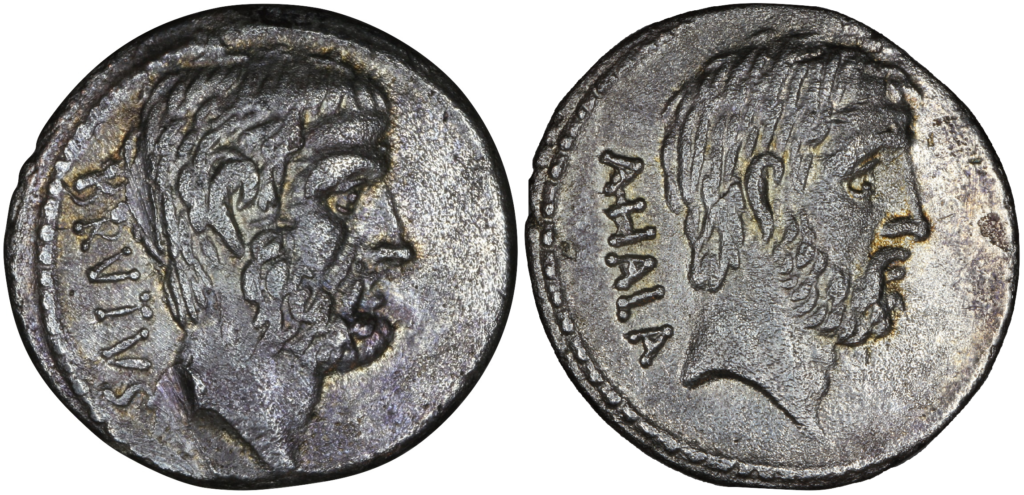
This is a coin whose primary interest is historical rather than art-historical, and I do not propose to repeat here what others have said more succinctly and eruditely than I could about the history. Nevertheless a few words are in order.
The moneyer is the M. Junius Brutus (born in 85), known as Q. Servilius Caepio Brutus through adoption by his uncle. The obverse BRVTVS refers both to the moneyer, and his ancestor: L. Junius Brutus (cos. 509), from whom Brutus claimed descent. He was the leader of the revolt which ousted L. Tarquinius Superbus, which prompted the transition of the Roman governance from monarchy to republic, and the founder of the gens Junia to which Brutus belonged.
On the reverse Ahala (mag. eq. 439) was a claimed ancestor of Brutus through adoption into the gens Servilia. He is reputed to have saved Rome from the tyranny of Spurius Maelius in 439 through the expedient remedy of stabbing him with a dagger hidden in his armpit (potentially via a folk-etymology linking “Ahala” with “axila”, armpit).
While aristocratic Romans did keep busts of their ancestors, and so had access to life-like images of their forebears, the Brutus and Ahala on the coin were too distant, and the images here are not modelled on real portraits; rather they are idealised and idealising images designed to connote the image that Brutus the Younger wished to convey.
Brutus had been very interested in his family tree –
fecit hoc idem separatim in aliis libris, ut M. Bruti rogatu Iuniam familiam a stirpe ad hanc aetatem ordine enumeraverit, notans, qui a quoque ortus quos honores quibusque temporibus cepisset.
At the request of Marcus Brutus he [Atticus] set out the Junia family in order, from their foundation to this time, recording who was a descendant of who, and which honours each had held, and at what time.
Brutus the ancestor, on the coin, appears with a thick head of hair but a close and neatly cropped one; his beard is thick but again short, and his head angular. His eyebrows are full and fleshy, and the fleshy ridge of his brow is a little, slight nod to Hellenistic ruler portraiture, though only a slight one. Overall the impression is given of an individual who is serious and contemplative.
Ahala is slightly more Hellenistic in construction, with a beard made of comma-locks and neat hair, with a similar brow but a less angular construction to his head.
Even those who hated him on account of his conspiracy against Caesar ascribed whatever was noble in the undertaking to Brutus.
Plut. Brut. 1.2.